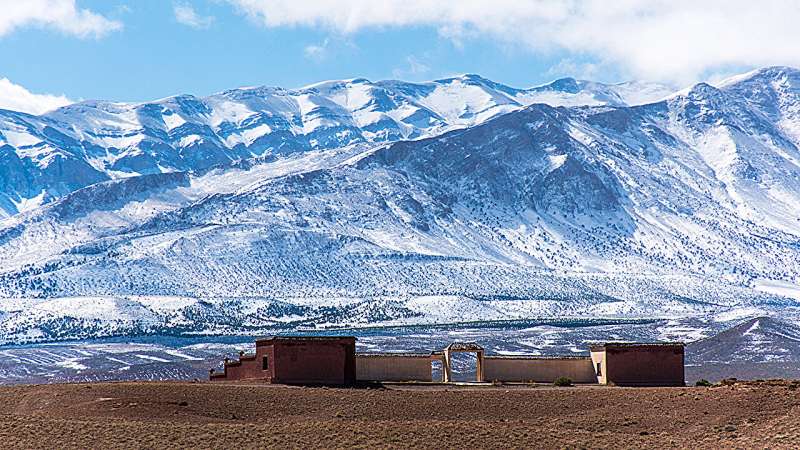This article has been reviewed according to Science X's editorial process and policies. Editors have highlighted the following attributes while ensuring the content's credibility:
fact-checked
peer-reviewed publication
proofread
Mantle upwelling may have triggered Morocco earthquake

On 8 September 2023, a magnitude 6.8 earthquake struck western Morocco, causing damage and destruction that claimed thousands of lives in rural communities in the High Atlas Mountains.
Prior to the 2023 event, the last powerful earthquake to affect Morocco occurred in 1960, and this long stretch of seismic silence may have contributed to the region and its infrastructure being underprepared for major shaking and associated damage.
Most of Morocco's seismic activity occurs near the Rif Mountains to the north of the 2023 epicenter, which are formed by convergence of the African and Eurasian plates. But closer to the High Atlas Mountains—the tallest in North Africa, with peaks rising more than 4,000 meters—the plates are converging at a rate of only about 1 millimeter per year.
It's thought that mantle upwelling beneath the High Atlas, more so than the slow convergence, is a main reason why these peaks reach as high as they do.
By examining geodetic and seismic data, Kai Huang and colleagues found that the 2023 Morocco quake originated in the Tizi n'Test fault system on a fault plane centered about 26 kilometers below the surface and that the rupture's strongest effects occurred at a depth of 12–36 kilometers. The event caused displacement of the Moho, the boundary about 32 kilometers beneath the surface where the crust meets the mantle.
Because of the unusual origination depth of the earthquake and its occurrence far from plate boundaries, the researchers suggest that the quake may have been triggered by the same mantle upwelling that helps lift the High Atlas Mountains, rather than by faulting activity closer to the surface.
The findings, which appear in Geophysical Research Letters, suggest that seismic hazard models should incorporate more data about deeper dynamics in intraplate regions, which are often overlooked in favor of plate boundary dynamics, according to the authors.
They also highlight the importance of seismic monitoring for regions, such as this one, where slow deformation rates and complex fault structures cause infrequent but devastating disasters.
More information: Kai Huang et al, The 2023 Mw 6.8 Morocco Earthquake: A Lower Crust Event Triggered by Mantle Upwelling?, Geophysical Research Letters (2024). DOI: 10.1029/2024GL109052
Journal information: Geophysical Research Letters
Provided by Eos
This story is republished courtesy of Eos, hosted by the American Geophysical Union. Read the original storyhere.





















